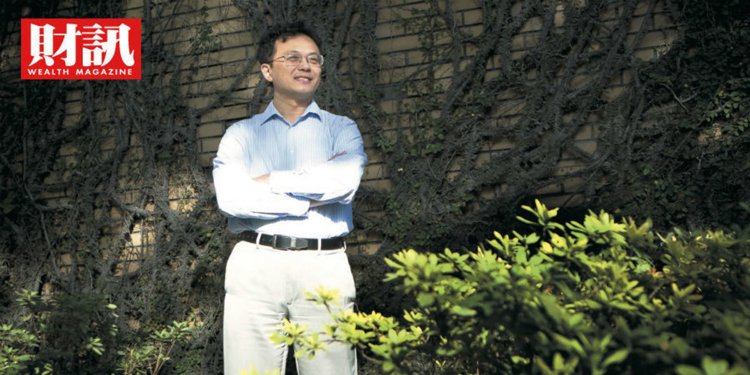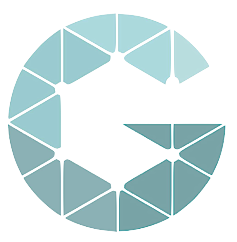 ▲ Graphen founder Ching-Yung Lin led the team to map the world's first AI "COVID-19 gene evolution path analysis". (Picture / Lin Wenyi)
▲ Graphen founder Ching-Yung Lin led the team to map the world's first AI "COVID-19 gene evolution path analysis". (Picture / Lin Wenyi)
According to media reports, the world's first "COVID-19 gene evolution path analysis" was launched. The team led by Ching-Yung Lin, an AI big data analysis expert and Graphen founder in the United States, took only one week to map out the COVID-19 virus genes that have appeared so far. Evolved, and analyzed several strains of stubborn virus.
In the 567th issue of Caixun, this scientist, Ching-Yung Lin, who was formerly the chief scientist of IBM, set the number one in many AI fields. The new technology developed by him is like an X-ray machine, no matter what you are looking for in your organization. Powerful people, people who are most likely to disrupt, or customers who are likely to reverse accounts, he can accurately find the target.
From the Department of Electrical Engineering at National Taiwan University to the chief scientist at IBM, and all the way from Tainan to New York, USA, Ching-Yung Lin walked for 22 years.
Last year, Ching-Yung Lin left IBM to set up a new company, Graphen, on Fifth Avenue in New York, to attack the field of artificial intelligence. Just over a year after the company was founded, it has won orders from Bank of China and another top international bank. (Further reading: Light of Taiwan! The world's first AI "COVID-19 gene evolution path analysis" was launched in Graphen .
In August of this year, 48-year-old Ching-Yung Lin returned to his hometown of Taiwan and announced the establishment of a Taiwan branch. Shao Xiaoli left the boss and returned home. In Taiwan, Ching-Yung Lin is still an unfamiliar name, but in the field of international network and multimedia research, his past achievements are amazing.
Ching-Yung Lin received his postdoc at Columbia University and was favored by the IBM Watson Research Center. He founded the center's online and machine learning department. At the age of 35, he became a professor of the Department of Electrical Engineering and Information at Columbia University. He also worked at the University of Washington and New York. Teaching at university; 41 years old, he got an academician of IEEE (American Institute of Electrical and Electronics Engineers).
A magical study helps IBM make a lot of money
When studying for his Ph.D. degree at Columbia University in the United States, Xu Hongmin, a professor at Taiwan University of Technology's Department of Engineering, who had the same professor as Ching-Yung Lin, said that Ching-Yung Lin is "a person with high standards and very hard working."
When he was at IBM, he was favored by the U.S. Defense Advanced Program Research Agency (DARPA), funding $ 25 million, and commissioned him to lead research scholars at 10 universities to study an issue that nobody has ever discussed: "How to get information from the Internet "Predict whether a person will commit a crime?" IBM has therefore created a system called Small Blue. "This system alone will make $ 100 million in revenue for IBM in a year."
However, Ching-Yung Lin, who studied graphs in the early days, developed a new company's system based on artificial intelligence functions, such as providing network security services for enterprises and reducing the risk of non-performing loans. During the interview, he even more bluntly stated that he is working with the Institute of Chemistry of the Chinese Academy of Sciences to develop medical-related applications with artificial intelligence. We can't help wondering, how can this start-up company do everything from internet security to bad loans to medical treatment?
Ching-Yung Lin spent his whole life studying computer vision and graphics related to artificial intelligence. Therefore, he stepped into the field of graphic computing, giving people the opportunity to see subtle phenomena that could not be found in the past. "The word Graph is wrong for Chinese translation into images." Ching-Yung Lin explained that in Webster's Dictionary, Graph is defined as "a combination of a group of points, this combination is sufficient to satisfy a specific relationship." The key is the word "relationship". He is a top expert in computer graphics and network science. In 2001, he began teaching computers how to automatically identify tables and chairs in movies.
For example, if you want to teach the computer to automatically recognize the bicycles in a photo, the bicycles seen by the computer may only have the handlebars of the bicycle, half of the wheels covered and a part of the frame. The relationship between these things can enable the computer to automatically recognize "that is a bicycle" even if it only sees incomplete graphics.
He realized that the key to his research was actually the relationship between each piece of information on the screen and another piece of information. In 2006, he suddenly thought: Why can't the technique of analyzing pictures be used to analyze social problems.
Anyone who has seen the movie "Hacker Mission" can understand his ideas. In this movie, everything is composed of other smaller information networks. What makes Ching-Yung Lin special is that he has changed his eyes and regarded everything as a network. By analyzing the information in this network, he can teach computers to recognize human faces and recognize phenomena that could not be found in the past. Make judgments and even form strategies to solve problems. "Our brain is actually a network," Ching-Yung Lin said.
The Defense Advanced Research Projects Agency sought him out for this technology. He recalled that the U.S. Department of Defense wanted to develop a technology that can predict whether a person will commit a crime by analyzing information on the Internet.
At IBM, this technology has become a profitable management tool. Ching-Yung Lin recalled that he had developed a tool that could set the price of everyone's connections within the company. He gave an example. When a problem occurs, who does everyone look for to solve the problem, and when a first-class expert encounters a problem, who asks who to solve it and what kind of response does it get. Spreading this network map, you can find that although some people may not have a high weight, they can use more resources than others.
But a more in-depth application is how to find out who might be the next "destructor". He gave an example. In 2010, 600,000 US government classified documents were leaked to Wikipedia's American soldier Manning. If he analyzes with his system, he can find out earlier that he is about to cause the largest security breach in American history.
"These discoveries will start with many small and small phenomena and gradually increase." He analyzed that at first, he would find that he had more conflicts with the surrounding staff, and the amount of scolding information in the communication increased. Then, His work pressure has increased, and if he works more than 10 hours a day, he may be sent to the war zone. At this time, the pressure of his own gender identity is also increasing, and the pressure is increasing one by one. Manning began to disagree with what he did, and last time he provided 600,000 confidential documents to go out.
Pre-A round valuation at $ 50 million
In the old system, these behaviors would be treated as independent events, and quarrels did not mean that he would leak, but Ching-Yung Lin's system provided a new perspective, which can analyze the relationship between each individual and the outside world at the same time, and predict his next actions. This system can be used not only for crime prevention, but also for product recommendation.
Now, Bank of China New York Branch uses the system he developed to manage online security, because human behavior is often the biggest loophole in security. Another bank also uses his system to manage bad debts lent to businesses. The principle is exactly the same: if you consider the company as a person, you can predict whether the company can repay on time by analyzing the financial flow, operation, finance, and industrial status of each company. "If other upstream and downstream companies in his environment have problems, his chances of problems will also increase." His platform can analyze the impact of 500 variables on a company at the same time.
But can't these existing databases of these technologies do? "The previous relational database was a table linked to a table," said Ching-Yung Lin. As long as one new number developed by his new platform, the numbers in the entire network will follow.
In Taiwan, he also hopes to apply the technology to biomedicine. "There are still many cause-effect relationships not found in current medical-related research," he said.
Ching-Yung Lin's company was just established last year, and the valuation of the Pre-A round reached US $ 50 million. His partners include the well-known Memorial Sloan Ketterling Cancer Center in the United States; in China, he is also working with Limai Law Office. AI (artificial intelligence) and big data technologies should be used in law.
At that time, nVidia used the processor that originally calculated graphics to solve the problem of artificial intelligence, and it skyrocketed. Now, Ching-Yung Lin wants to analyze the technology of graphics and network to analyze the problems of human society. The first half of his career is full of surprises, and the second half is worth looking forward to. (Further reading: Ching-Yung Lin builds an AI base to fight for the second half of life )
Source: Original story in Chinese https://www.wealth.com.tw/home/articles/24648
